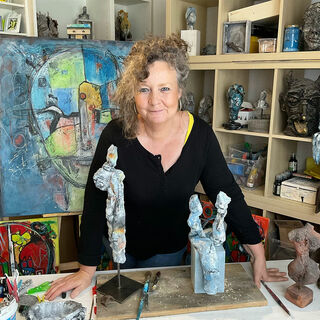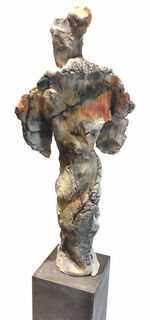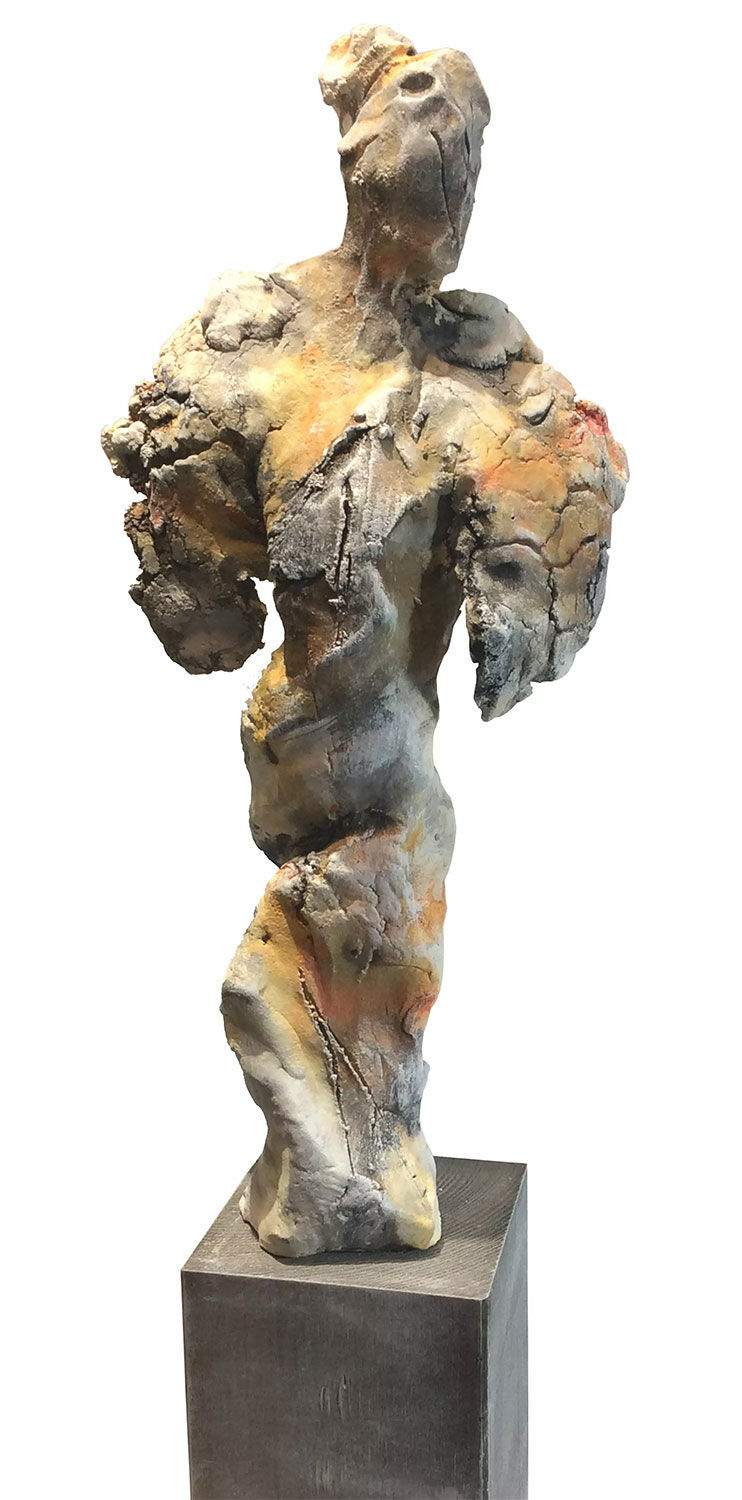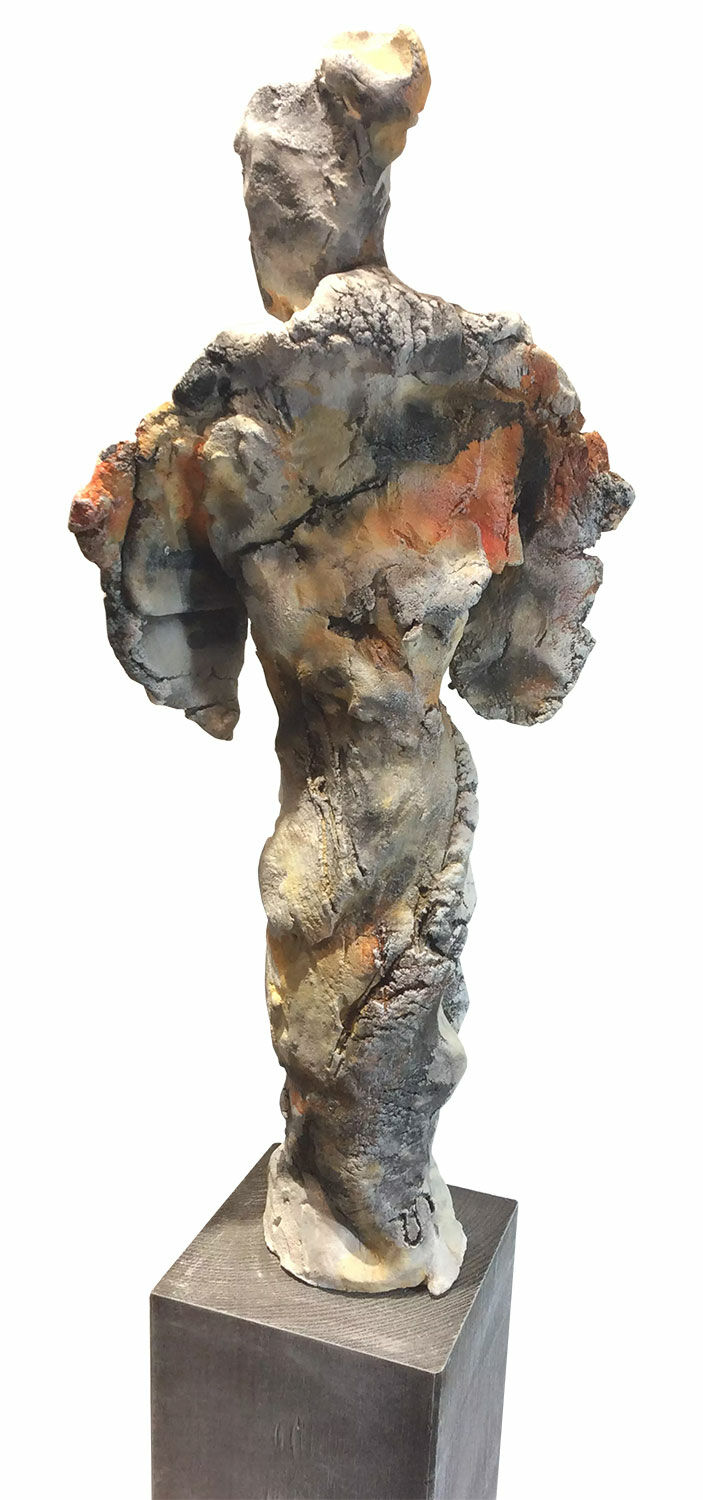Sculpture "Figurine XI" (2023) (Original / Unique piece)
Sculpture "Figurine XI" (2023) (Original / Unique piece)
Quick info
unique piece | signed | ceramic | clay | wood | patinated | total size 53 x 18 x 10 cm (h/w/d) | weight approx. 2.7 kg
Detailed description
Sculpture "Figurine XI" (2023) (Original / Unique piece)
Sculpture made of ceramic and clay. Finished with a cold patina. Signed by hand. Size incl. wooden pedestal 53 x 18 x 10 cm (h/w/d). Weight approx. 2.7 kg.

About Ilona Schmidt
Ilona Schmidt lives and works in Hamburg. She expresses her enthusiasm for the diverse individual human characteristics and idiosyncrasies in her works. Guided by her intuition, she avoids traditional methods such as scripts or sketches. Her goal is to express her thoughts and ideas on various topics, such as the environment, fragility or issues of belonging through the use of different methods in order to provide a different understanding for the viewer of her art.
Since 2011, Ilona Schmidt has regularly exhibited her work at exhibitions in Germany and abroad. Her works can be found in private collections in Argentina, Canada, Europe and the USA.
A plastic work of sculptural art made of wood, stone, ivory, bronze or other metals.
While sculptures from wood, ivory or stone are made directly from the block of material, in bronze casting a working model is prepared at first. Usually, it is made of clay or other easily mouldable materials.
The prime time of sculpture after the Greek and Roman antiquity was the Renaissance. Impressionism gave a new impulse to the sculptural arts. Contemporary artists such as Jorg Immendorf, Andora, and Markus Lupertz also enriched sculptures with outstanding works.
A one-of-a-kind or unique piece is a work of art that has been personally created by the artist. It exists only once due to the type of production (oil painting, watercolours, drawing, etc.).
In addition to the classic unique pieces, there exist the so-called "serial unique pieces". They present a series of works with the same colour, motif and technique, manually prepared by the same artist. The serial unique pieces are rooted in "serial art", a type of modern art, that aims to create an aesthetic effect through series, repetitions and variations of the same objects or themes or a system of constant and variable elements or principles.
In the history of arts, the starting point of this trend was the work "Les Meules" (1890/1891) by Claude Monet, in which for the first time a series was created that went beyond a mere group of works. The other artists, who addressed to the serial art, include Claude Monet, Piet Mondrian and above all Gerhard Richter.






